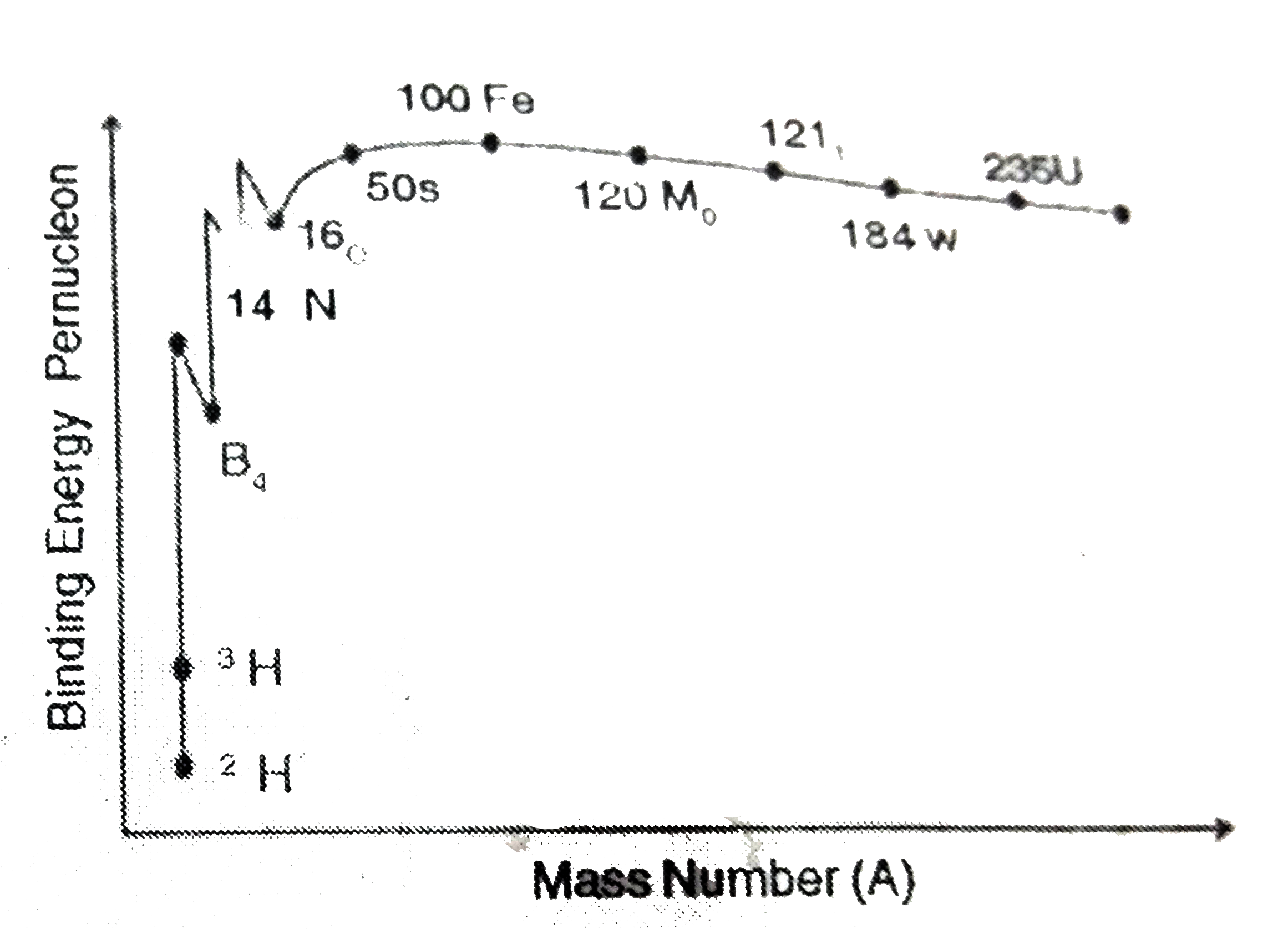(a) Explain the processes of nuclear fission and nuclear fusion by using the plot of binding energy per nucleon (BE/A) versus the mass number A.
(b) A radioactive isotope has a hald -life of 10 years. How long will it take for the activity to reduce to 3.125%.
(a) The atom curve shows that:
(i) when a heavy nucleus breaks into the two medium sized nuclie (in nucler fission). The BE/nucleon increases resulting in the release of energy. (ii) When two small nuclei combine to from a relatively bigger nuclues fusion BE/nucles increases, resulting in the resulting in the relase of energy.

(b) Half life of the radioactive isotope = 10 years.
After decays , the amount of the release of energy.
(b) Half life of the radioactive isotope = 10 years.
After decay, the amount of the radioactive isotope = N.
Given 3.125% of N0 remains after decay tehn
NN0=3.125%=3.125100=132
But NN0=e−n
Where, λ = Decay constant .
t = time .
−λt=132
−λt=In1−In32
−λt=0−3.4567
t=3.4567λ
sincλ=0.693T=0.69310
(3.4660.693)10=50
Thus , the isotope will take about 50 years to reduce to 3.125% of its original value.
Topper's Solved these Questions
- BOOK - XII BOARDS PREVIOUS YEARCHAPTER - XII BOARDSEXERCISE - SECTION - A7videos
XII BOARDS
- BOOK - XII BOARDS PREVIOUS YEARCHAPTER - XII BOARDSEXERCISE - SECTION - B9videos
XII BOARDS
- BOOK - XII BOARDS PREVIOUS YEARCHAPTER - XII BOARDSEXERCISE - SECTION - E6videos
XII BOARDS
- BOOK - XII BOARDS PREVIOUS YEARCHAPTER - SAMPLE PAPER 2019EXERCISE - SECTION D6videos
SAMPLE PAPER 2019
Similar Questions
(a) Explain the processes of nuclear fission and nuclear fusion by using the plot of binding energy per nucleon (BE/A) versus the mass number A.
(b) A radioactive isotope has a hald -life of 10 years. How long will it take for the activity to reduce to 3.125%.View SolutionA radioactive isotope has a half-life of 10 year.How long will it take for the activity to reduce to 3-125% ?
View Solution
Knowledge Check
- Question 1 - Select One
A radioactive isotope has h half-life of 2 yr. how long will itt take the activity to reduce to 3% of its original value
A48yrB7 yrC10yrD96 yr - Question 2 - Select One
A radioactive isotope has a life of T years. How long will it take the activity to reduce to (a) 1% of its original activity?
A3.2TyrB4.6TyrC6.6TyrD9.2Tyr - Question 3 - Select One
A radioactive isotope has a half-life of T years. After how much time is its activity reduced to 6.25% of its original activity ? Given T1/2=T
A6TB8TC4TD5 T
A radioactive isotope has a half life of 5 yrs. How long will it take the activity to reduce to 3.125%?
View SolutionA radioactive isotope has a half-life of T years. How long will it take the activity to reduce to (a) 3.125%, (b) 1% of its original value ?
View SolutionA radioactive isotope has a life of T years. How long will it take the activity to reduce to (a) 3.125%(b)1% of its original activity?
View Solution(a) Define the term ‘activity’ of a given sample of radio nuclide. Write the expression for the law of radioactive decay in terms of the activity of a given sample.
(b) A radioactive isotope has a half-life of T years. How long will it take the activity to reduce to 3.125% of its original value ?
(c) When a nucleus (X) undergoes β-decay, it transforms to the nucleus (Y). Does the pair (X, Y) form isotopes, isobars or isotones ? Justify your answer.View SolutionVARIATION OF BINDING ENERGY OF PER NUCLEON WITH MASS NUMBER
View Solution
